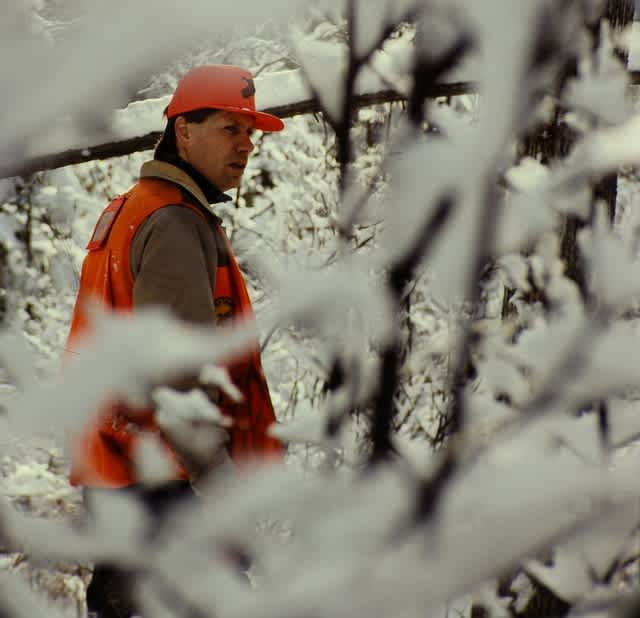The Pursuit: A Primer on Michigan Snowshoe Hare Hunting
Steve Griffin 12.20.12

If there’s an animal that’s an emblem of Michigan winter, it might be the hare.
Varying hare, snowshoe hare, call it what you want. Just don’t call it a rabbit, they’re different species despite their similarity–hare are born with fur and with their eyes open, rabbits naked and eyes-shut.
In recent years, some have called it scarce, but the snowshoe hare’s still out there for those who venture into thick cover, on deep snow, in silence broken most often by a baying dog, and occasionally by a barking rimfire rifle or booming shotgun.
Like its non-relative the rabbit, a hare will usually run a circle when pursued (a notable exception is late March, when breeding-minded males seem ready to flee the country entirely, sometimes leading to long hours searching for an errant dog).
When a beagle strikes a track, it leaves its human partners behind and follows the hare, bellowing as it goes, often moving at more a workman-like pace than the all-out pursuit many imagine.

Hunters take stands based on where they figure a returning hare will pass, often eyeing a trail or other opening. They double-check the position of their partners for safe shots. And, long before the dog returns, they strain their eyes for a ghost, a whiff of white with black eyes.
Sometimes the first movement they detect is the dog; the hare has slipped past undetected! Then it’s time to wait out another roundabout, unless the hare finds a way to ditch the dog.
The varying hare matches its northern Michigan haunts by wearing brown fur through most of the year, changing to fluffier white fur to blend into the winter landscape, making it tougher for predators–hawks, owls, bobcats, and others, besides people–from seeing it.
White fur can’t cover up tracks and scent, though. Beagles can smell hare tracks in snow, some handlers say they do best when it’s topped by a bit of fresh powder.
People? Dogless, their only chance of putting a hare in the game bag is to walk a line of tracks. That, though, offers its own sport and satisfaction.
My friend, the late Gary Haske, loved to strap on military-surplus wooden-framed snowshoes and head into the Nine Mile Hill Swamp near St. Helen in mid-northern Lower Michigan.

Walk a spell there or in virtually any big chunk of land in the northern two thirds of the state, and one is likely to eventually trudge across a snowshoe hare track.
Moving slowly, Haske would shift his glance from the tracks at his feet to the middle distance, looking both at the line the tracks traced and into little pockets of cover where a hare might hide. In a party of hunters, one follows the track while others fan out on each side.
You’ll seldom see an entire rabbit, at least at first. More often, it’s an eye, nose, or ear that gives away a hare’s hideaway.
More interested in adventure than a meal, Haske carried a .22 rifle. Others favor shotguns, with 20 gauge lightweights most popular.
Rifle or shotgun, behind a beagle or being your own dog, pursuit of a snowshoe hare is about as perfectly wintry a Michigan thing as you can do!
For more information on Michigan hunting go to michigan.org.

